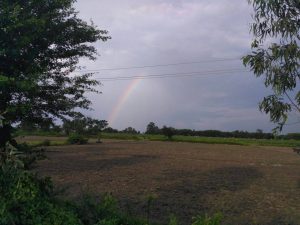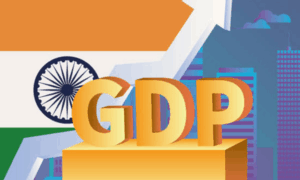
Photo Credit: Outline India
The success of policy-driven adaptation depends on the understanding of an entity’s vulnerability because it helps identify vulnerable regions or sectors to prioritise resource allocation for adaptation, and to recommend adaptation measures for specific regions and sectors
By Amarnath Tripathi
Climate change is likely to affect crop productivity adversely and that would have a serious threat to food and livelihood security particularly in a country like India, where agriculture employs 55 per cent of its total working population and accounts for about 14.1% of its Gross Domestic Product. Despite the improvement in India’s agricultural productivity and production over the past six decades (since Independence), food and nutritional security remain a major challenge for the country because of the poor public distribution system, poverty, and bad governance.
The main challenge in developing countries is that most are marginal farmers with low adaptive capacity. Even if adaptation is autonomous, it would not be sufficient to offset losses from climate change. Hence, policy-driven adaptation is required. The severity of this challenge could increase in the coming years due to a sharp decline in food availability, mainly because of population growth, and stagnant food productivity. It underlines the need for further growth in agricultural production along with improvements in the distribution system, the income of poor households, and governance.
In India, temperatures have already crossed the threshold of climate change, and are likely to have an adverse impact on Indian agriculture, as has been empirically proven by several studies. There are studies to suggest that global warming has already had an adverse impact on crops like wheat, paddy and rice. A study observed that rice yield in India has already dropped by 5 to 10 percent between 1966 and 2002.
This negative impact on agriculture further threatens a country’s food and nutrition security programme, since declining food production decreases food availability and limits access to food. There are 842 million undernourished people in the world today—98 per cent of which live in underdeveloped countries and this number is likely to increase in the future, in view of global climate change. To prevent that from happening, agriculture practices have to shift towards ‘climate-smart agriculture’ (CSA), which minimises the adverse effect of climate change and controls GHG emissions from agriculture. CSA has become a popular term, and several multi-government organisations are working on climate smart initiatives.
Strategic research and technology demonstration are major pathways to achieve programme objectives. To reduce the vulnerability of the system to climate change, some policy actions are required urgently. The climate policy literature suggests two policy options to deal with the inevitable impacts of climate change and variability: mitigation and adaptation.
While, traditionally, mitigation has received a higher priority, adaptation has only recently gained worldwide interest. The Government of India (GoI) has also started to give it more importance, along with mitigation, as is evident from India’s National Action Plan for Climate Change (NAPCC) and its budget for 2014 2015 wherein the Finance Minister had announced a scheme called Agriculture Adaptation Fund.
The success of policy-driven adaptation depends on the understanding of an entity’s vulnerability because it helps identify vulnerable regions or sectors to prioritise resource allocation for adaptation and to recommend adaptation measures for specific regions and sectors.

Amarnath Tripathi is an Assistant Professor at Institute of Economic Growth, Delhi. Dr Tripathi received his PhD in Economics from Banaras Hindu University in 2010. His research focuses on agriculture & natural resource economics; climate change; food security; and food systems. His academic work has appeared in Economic & Political Weekly, Climate Risk Management, Environmental Management, Journal of Environmental Planning & Management, Indian Journal of Agricultural Economics, Indian Economic Journal and other academic journals.


















